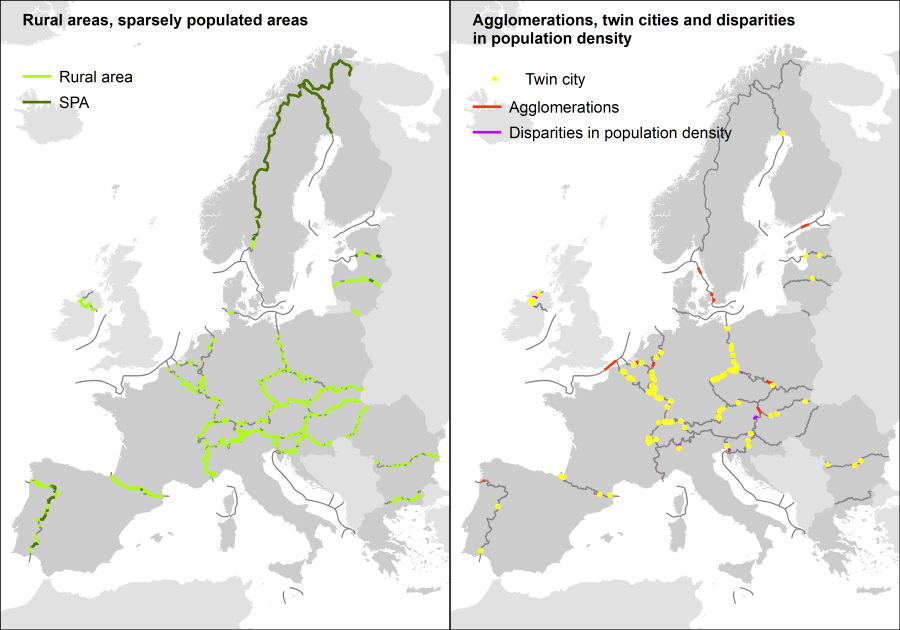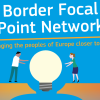Borders often have certain specificities. Some are of geographical nature, such as mountains, rivers or lakes, and others are due to spatial and settlement structures, such as sparsely populated areas, twin cities, or large cross-border agglomerations. These factors and obstacles impact the provision of and demand for cross-border public transport services, either positively or negatively.
The share of CBPT services operating in border areas without any specificities is almost twice as high as these areas’ share in total border length. Services across border rivers or lakes or in mountain areas are proportional to the length of these borders. Thus, geographical specificities other than maritime borders seem to matter little. The demand side is what matters most: CBPT services in rural areas and especially sparsely populated areas are well below these border areas’ proportions, while services in twin cities and agglomerations are far more frequent. Thus, improving accessibility in border areas with relatively low initial demand for CBPT will be one of the crucial challenges to improve living conditions in these border areas.
In the next update, we will provide the first results on legal and administrative obstacles for CBPT services hampering public transport accessibility in border areas.

- Logga in för att kommentera
- Taggar
- transport

